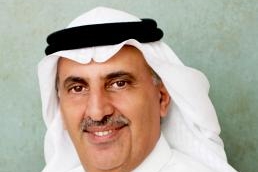UAE plastics industry growth highest in the GCC
UAE plastics industry is fastest growing in the GCC, growing by 24.2% per annum in past decade, according to GPCA.

Dubai, United Arab Emirates – The UAE plastics industry is the fastest growing in the GCC, growing by 24.2% per annum in the past decade. This is according to the ‘GCC Plastic Industry Indicators 2016’ report due to be released at the 8th edition of GPCA PlastiCon by Gulf Petrochemicals and Chemicals Association (GPCA), the go to resource for industry data in the region. Set to take place on 9-10 April in Jumeirah at Etihad Towers, Abu Dhabi, PlastiCon is an annual GPCA event that caters to the plastics segment of the petrochemical industry.
According to the report, the GCC plastics industry is expected to reach 34.5 million tons by 2022, supporting further downstream development, while growing at a CAGR of 3%. Future plastic capacity growth will be driven by Saudi Arabia, Kuwait and Oman. In 2016, GCC plastics producers’ sales represented 4% of the global industry’s sales revenue, reaching USD 33-34 billion. The industry’s capacity expanded in 2016 by as much as 5%, reaching 27.1 million tons. In previous years, Saudi Arabia alone accounted for 2% of global polymer sales, and ranked as the eighth largest plastics producer globally.
Dr. Abdulwahab Al-Sadoun, Secretary General of the GPCA, said, “Petrochemical producers are increasingly diversifying their portfolios, investing in new products and moving away from traditional commodity polymers towards specialties such as engineering plastics and elastomers. This is, in turn, supporting the expansion and development of the entire downstream industry in the region.”
Synthetic rubbers will witness the biggest number of products introduced in the following years, benefitting from expected growth in the transport and automotive sectors. By 2022, nearly 70% of all incremental supply growth will come from commodities polymers, which represent 89% of GCC polymers capacity. GCC engineering and specialty polymers output grew by 15% in 2016, reaching 2.5 million tons. The industry also comprises nearly 40,000 employees with additional 118,000 in supporting sectors.
GCC polymer consumption increased by 4% in 2016, reaching 5 million tons. Saudi Arabia accounted for 67% of the GCC polymer resins production in 2016 and was the largest polymers consumer in the GCC, followed by the UAE which accounted for 19%.
Industrial packaging is the fastest growing end user market for polymers in the region. Consumer packaging accounts for 44%, followed by the construction industry which accounted for more than a fifth. Plastic consumption in the GCC is increasing rapidly and reached 94 kg per capita in 2016.
A number of industrial parks focused on polymer conversion and multi industry are under development in Saudi Arabia, UAE and Oman, with some being built next to big resin production facilities. The USD 4.5 billion Abu Dhabi Polymers Park project in Mussafah, Abu Dhabi will consume between 1-2 million tons/year of plastics, mainly polyethylene (PE) and polypropylene (PP). The first and second phases of Khalifa Industrial Zone Abu Dhabi (Kizad) will accommodate various types of light, medium and heavy industries, including petrochemicals. Built by Sharjah Asset Management, the investment arm of the Government of Sharjah, Al Saja'a Industrial Oasis is expected to be one of the largest industrial projects in the region.
